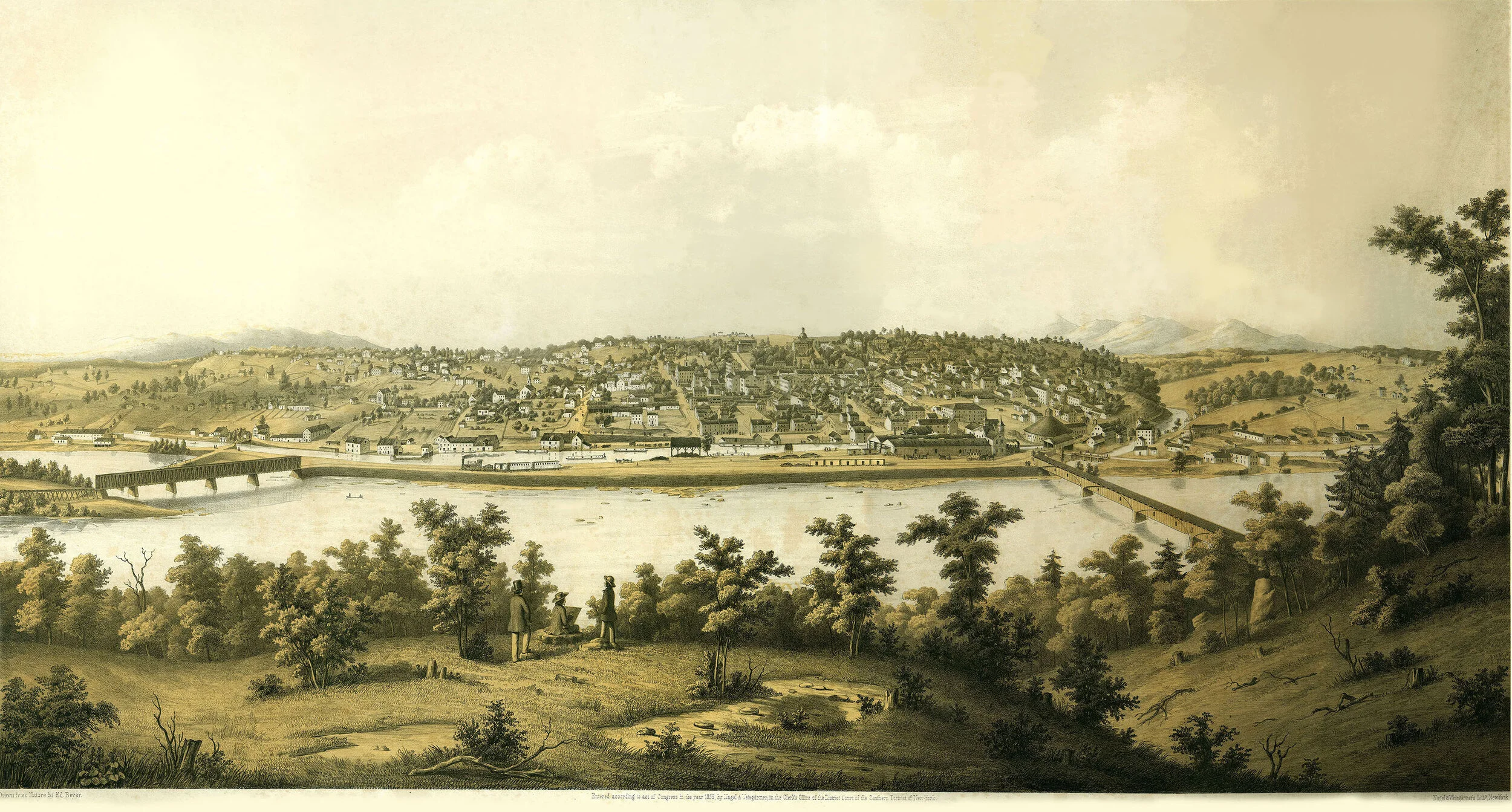1820s–1840s
he seeds of the Holy Cross Catholic community can be traced back to 1829 when a visiting priest, Father Cooper, celebrated the first mass in the home of Mrs. Mary Dornin. Over the next decade a movement was started to establish a Catholic church to administer to the many Irish Catholic immigrants who were working on the Kanawha Canal. Mary Dornin’s house continued to serve the faithful. According to Holy Cross, in 1838 Father Timothy O’Brian came from Richmond to organize religious education for up to sixty Catholic children.
In 1841 Father Daniel Downey was assigned to Lynchburg. As a result of his congregation’s faith and commitment, the Church of St. Francis Xavier was built in 1843 in the 900 block of Clay Street. Parishioners stood for services as there were no funds left for any furnishings. Father Downey was also responsible for missions in Staunton, Lexington, and Charlottesville.
Early Irish Stoneworkers in Lynchburg
This tombstone for Elizabeth Virginia McGrath (1837–1838) is one of many markers for early Irish immigrants found in Lynchburg’s Old City Cemetery.
Elizabeth’s father Michael McGrath (or McGraw) (c.1810–1886) was a stone mason who likely came to Lynchburg in the early 1830’s to build stone walls, culverts, and bridges for the James River & Kanawha Canal.
Note the reference to his Irish nativity: County of Tipperary, Parish of Nenagh. Latin phrases (“Gloria in Excelsis Deo et in tara [terra], memento mori”) are a unique signifier of Catholic faith on tombstones in Lynchburg.
St. Francis Xavier Catholic Church, 900 Block of Clay Street, circa 1880, Courtesy of Holy Cross Catholic Church
1869–1909
The arrival of Father James McGurk in 1869 encouraged rapid growth in Lynchburg’s Catholic community. Two years later land was purchased for $6,000 to construct a new church at Seventh and Clay Streets, and on September 14, 1879, Holy Cross Catholic Church was dedicated. The building was designed by Col. Ludwig August Forsberg, an engineer and architect for the city of Lynchburg, in the Gothic Revival style. A two-thousand pound bell was installed in the steeple, but due to its deafening sound, a separate bell tower was built in 1899. The bell tower was modified in 1978 when the bells became electrically controlled.
Other accomplishments achieved during the forty-year pastorate of Father McGurk include the purchase of land on Bedford Avenue for Holy Cross Cemetery and the initiation of a parochial school at Ninth and Clay Streets. The Sisters of Charity came from Emmitsburg, Maryland, to staff the school and remained for over one hundred years until their departure in the spring of 1987 due to a drop in membership of their order.
Father James McGurk, circa 1875
Courtesy of Holy Cross Catholic Church
Postcard featuring Holy Cross Church, circa 1910
Courtesy of Holy Cross Catholic Church
Interior of Holy Cross, circa 1880
Courtesy of Holy Cross Catholic Church
Interior of Holy Cross, circa 1900
Courtesy of Holy Cross Catholic Church








